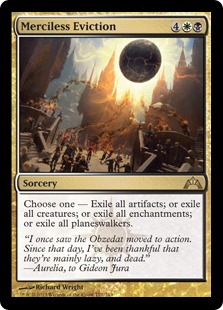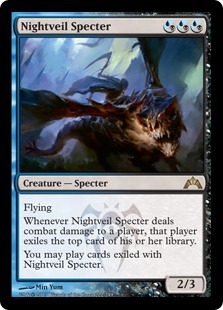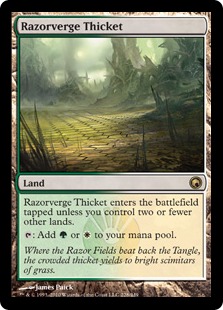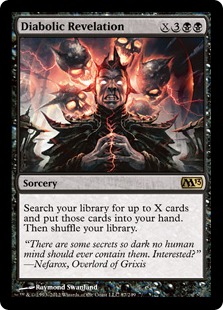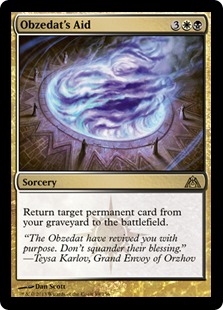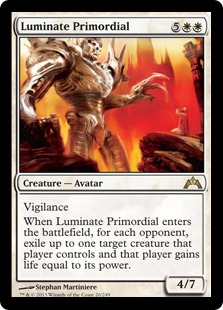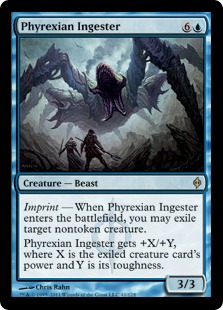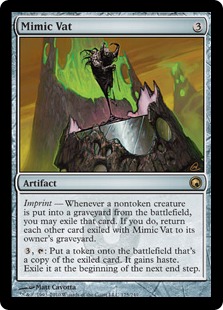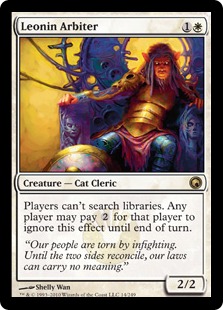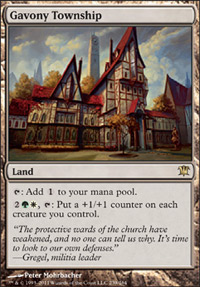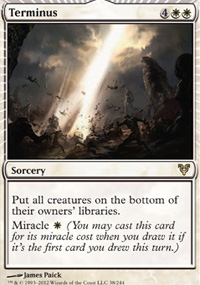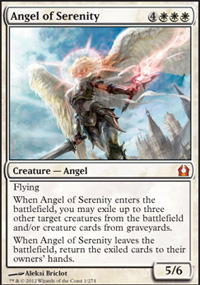Back in September, I decided I would try financially speculating on some cards. I had $60 that I should have put towards my credit cards and went ahead and spent it on Magic cards. Ones that I was not even going to play in decks. At the time I had been hanging out on the MTG Finance subreddit and reading everything I could about speculating (long and short term), pricing spikes, and financial floors and ceilings. I even started using words like arbitrage, opportunity cost, and liquidity. Yet, despite my increased financial vocabulary, I still wasn’t sure I could make money in the speculating game. I don’t consider myself a financially savvy person in general and honestly, I’ve always found trade sharks and finance enthusiasts to be a little…unsavory. I want to make money as much as the next guy, but if this money is made by exploiting others, or taking advantage of people who aren’t familiar with pricing trends, well, I don’t really feel okay doing that.
However, with the popularity of the MTG Finance subreddit (with more than 4,000 active users) and the subscription site Quiet Speculation, it has become apparent that if you’re not making money someone else is going to. This doesn’t mean that I advocate buying out cards on TCGplayer or cornering the market on older cards with fewer listings, just that I think it’s ok to make money to help subsidize the cost of playing competitive Magic. With all of the buyouts and increased volatility in the secondary market, it’s more important than ever for players outside of the financial world to become initiated. I want to see casual players understand the basics of finance, not so they can use their spec gains to buy a car, but so they can continue to play the game they love without spending an arm and leg to do so.
Anyway, I wrote an article just about 6 months ago, with some very basic guidelines and a list of specs. What I’d like to do here is expand on those ideas, discuss how my specs have done, and suggest a few long term specs going forward.
1. You should invest in inexpensive cards because they are lower risk than cards that cost more. If I buy 20 cards at $.15 each and they don’t move, well, I only lost a few dollars and can always ship them back to a bulk buyer for a little less than what I paid. If I buy 20 cards at $5 and don’t move them, well my electricity bill is not getting paid. Also, if a card goes from bulk to playable, it should multiply in price several times, from $.15 to $1 is almost seven times the initial investment. This is not commonplace in more expensive cards.
I think the advice here is essentially sound, though it should be expanded on. You shouldn’t really be investing in “bulk” cards but rather cards that have seen constructed play and seem to be at their floor. For example, Razorverge Thicket is a card that was $7-8 while Standard legal and dropped to $2 after rotation. However, Razorverge Thicket is still a card that sees play in multiple archetypes in Modern and since many other fast-lands are trending upward, see Blackcleave Cliffs, I think this card could return to the $7-8 range come Modern season. If it hits $8 we’re looking at potential 400% growth. However, if this card had hit its floor around $4, I wouldn’t have invested in it, since the room for growth just isn’t that high.
2. You should invest in EDH playables. Since the Standard market crashes every couple of years, with the exception of a handful of eternal playables, and the Legacy/Vintage environment is hostile to 95% of the cards that Wizards prints, Commander seems to be the safest market for speculating. If I had realized that bulk rares like Asceticism, Mycosynth Lattice, or Deserted Temple would be worth actual money, well, I would be a much richer man.
There is one big flaw in my thought process here. In a format with a bunch of one-of’s, the cards you should be investing in are foils whenever possible. Furthermore, I think foil EDH playables are good long term specs but could potentially take years to fulfill their monetary potential. If you’re buying foil Thespian’s Stages, which I think are great buys at $8, it might take a few years before you can sell for a real profit.
3. Your speculation stock should be diversified. Instead of going in on 500 Hex Parasites, it’s certainly safer to have a speculation box full of several different targets. Think about this like roulette, you make more money if you have all your chips on 22 black, but if the ball doesn’t land on 22, you’re going to wish you have spread out your chips a little more.
I still like diversity though I think I can expand a little bit on my last point. Up until a few weeks ago, I was a big fan of picking up foil Sylvan Primordials; the card went in every green EDH deck and could be picked up pretty cheaply since Gatecrash was being aggressively drafted. However, after the Primordial got the banhammer in EDH, foil versions of this card have nowhere to go but down. If you go all in on one card, all it takes is a reprint or ban to prevent you from making any money.
4. If the price of something spikes, get rid of it while it’s hot. Cards often fluctuate very quickly in value before falling once again. Think about Land Tax‘s price after it was taken off the Legacy ban list, it went from $5 to $35, but after seeing essentially zero legacy play it settled around $15. Don’t get greedy.
Right now we’re seeing a lot of spikes on the secondary market. Look at Bitter Ordeal, Norin the Wary, and Porphyry Nodes and you’ll see cards that went up because they saw some fringe play and a lot of people bought in to make sure they weren’t missing the next big thing. The problem is Bitter Ordeal can’t sustain an $8 price tag. The card doesn’t see any play and isn’t a card that would seem to have a lot of casual appeal either. While Future Sight cards are perhaps more prone to price spikes, since it was a small set that wasn’t opened nearly as much as Time Spiral, Bitter Ordeal is a card that will continue downward until it bottoms out around $4.
5. Don’t speculate on cards from the newest set until prices go down. While I wish I would have boughtTarmogoyfs for their initial $4 presale price tag, for everyTarmogoyf there are 50 cards with presale prices that are way higher than they ought to be. I actually traded forTime Reversals at $25 when they came out and I still hate myself for it.
Let’s look at the gods from Born of the Gods to see if this theory holds up. Mogis was preselling for $20, Xenagos for $25, and the rest of the gods for about $10. Currently none of these cards have their presale price-tag with Mogis, Xenagos, and Karametra at roughly half of their presale value and the rest hovering around 70-80% of their initial price. Don’t buy cards at presale prices.
6. Be patient. These things take time.
Amen.
Some stuff I would add:
7. It’s better to speculate on cards from smaller “third” sets that were not widely drafted.
This is simple supply and demand. Cards from Future Sight tend to trend higher than cards from Time Spiral because we opened a lot more packs of Time Spiral over the course of the blocks Limited run.
8. Pay attention to the number of copies on TCGplayer.
Right now, TCGplayer is the go-to place for pricing. The problem here is that even with a bunch of vendors active on the site, items are still susceptible to being bought out entirely. Pretty recently someone realized that Stranglehold was in short supply on the site and went and bought them out. This of course led to Stranglehold going from $3 to a mid of $25. For the record, I think this is stupid. Buyouts artificially increase prices to an unsustainable level and makes the card less available for people who want to buy it, which in this case is strictly EDH and casual players. I don’t advocate buying out cards like this but I think it’s important to understand when a card is rising in price to meet demand and when some asshole decides they can make a few dollars off a card with a limited print run. If you have this information, you can make better decisions regarding when to buy a card you might need for a deck.
Anyway, here were my specs from six months ago, with an update on their values.
Merciless Eviction (8x at $0.45 each)
This was a bad spec. While I think Merciless Eviction is pretty sweet in Commander, I made a few mistakes. The card was from a very widely opened set, which means we have a high supply, but isn’t widely played in constructed, which means low demand. While I think this is the kind of card that could go up due to Commander, this growth is going to be very slow. The foil copies of this can still be bought around $3 too, which is a better play if we’re looking at long term Commander cards.
Nightveil Specter (8x at $0.65 each)
This was my home run. I was able to break even on all my investments because this card went up so much. My only “mistake” was that I sold the card before it hit the $10 point it is at now. While I obviously underestimated the ceiling on this card, I think it’s better to sell cards and make money, then to hold on to them in hopes that they will go higher. I ended up getting out at $7 each, which I’m totally fine with.
Razorverge Thicket (8x at $1.66 each)
This one has been steadily rising over the past few weeks. The lowest price on TCG is $2.80 but I fully expect this card to continue to rise into Modern season. I liked this card initially because it sees play in Bogles, Hate Bears, and some Pod decks in Modern, and because it was cheap even in comparison to the other Scars fast-lands. It is worth noting that Razorverge was printed as a two-of in an event deck, which may prevent it from hitting double digits, but I don’t think it’s enough of a factor to depress the price of the most played fast-land in Modern.
Diabolic Revelation (8x at $0.24 each), Obzedat’s Aid (8x at $0.23 each) The Gatecrash Primordials (8x of each at $0.15-0.20), and Phyrexian Ingester (20 at $0.15 cents each)
I lump all of these together because they are all bulk cards that only have application in EDH. These were horrible buys since there are a ton of these cards on the market, they only see play in one format, and they are not even foil. I will avoid speculating on stuff like this in the future. It is possible that some of this stuff will make slow gains over time, and they were all very low risk in terms of monetary investment, but still not going to make me any money anytime soon.
Breaking//Entering (8x at $0.49 each)
Currently you can’t find these on TCG for less than $ 0.75 each. These will continue to rise over the years because of casual demand for powerful mill options. I hate to sound like a broken record but the foil/promo versions would have been a better investment, but oh well, I’m still okay with this one in the long term.
Mimic Vat (8x at $1.49 each)
One more EDH card. This one I think is a bit different than the other failed specs though. The fact that this card could be slotted into every deck because of its colorless status is worth noting. Also this card is just sweet. This is just a gut feeling but it doesn’t feel like a $2 card.
Leonin Arbiter (8x at $0.34 each)
If the speculation craze has shown us anything, it’s that cards can spike based on some camera time at a Pro Tour or GP. Leonin Arbiter is a card that only sees play in the Modern GW Hate Bears deck but is priced really low, especially in comparison to other Death + Taxes type creatures. If this deck ends up having some strong finishes outside of the MTGO Dailies, I could see the price going up. Once again, it’s such a low risk spec money wise that I’m not too upset even if it doesn’t work out.
While most of my specs turned out to be busts, or just really slow movers, this exercise gave me a lot of insight into how to speculate and the Magic finance market in general. In the future, I like investing in cards that see play in multiple constructed formats and have a low buy in price with the capability to move upward based on the cards own price memory or a precedent set by similar cards. Here are a couple of cards I would consider speculating on moving forward:
Gavony Township (X at $1.50)
There are a lot of copies of this card available for $1-1.50, which is insane to me. Township sees Modern play in Melira Pod as well as GW Hate Bears and as a one of in some Unburial Rites decks. Aside from Modern play, this thing is a sweet utility land for Commander. Going into Modern season, I like trading or buying into a few sets of these.
Terminus (X at $2.50)
Pretty recently the price of Entreat the Angels has gone up quite a bit due to the popularity of URW Miracles at the Legacy GP in Prague. Terminus is a three to four of in this deck, has potential to see some sideboard play in Modern, and compares favorably to Hallowed Burial which is an EDH Staple. Right now you can buy this card at $2, which is very low for a card that previously had a $10 price tag. The foils are a little pricey at $8-$10, but with foil Hallowed Burial hitting $20+, I think there is room for growth.
Angel of Serenity (X at $3)
You can buy this card for two to three bucks right now. It is a mythic angel, which of course carries with it casual appeal, and saw a lot of play in Standard before Innistrad block rotated. At its height this was a $15+ card. If we get one good reanimation spell in Journey to Nyx, this card is going to skyrocket, and even if we don’t, this card will be slow gainer for years to come. This can’t go any lower than it is right now.
I hope you enjoyed this foray into finance. Next week I’ll be back on the constructed grind, perhaps getting in some games of Modern.
At age 15, while standing in a record store with his high school bandmates, Shawn Massak made the uncool decision to spend the last of his money on a 7th edition starter deck (the one with foil Thorn Elemental). Since that fateful day 11 years ago, Shawn has decorated rooms of his apartment with MTG posters, cosplayed as Jace, the Mindsculptor at PAX, and competes with LSV for the record of most islands played (lifetime). When he’s not playing Magic, Shawn works as a job coach for people with disabilities, plays guitar in an indie-pop band, and keeps a blog about pro-wrestling.


